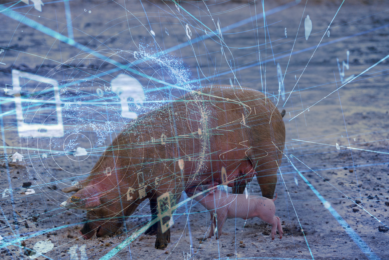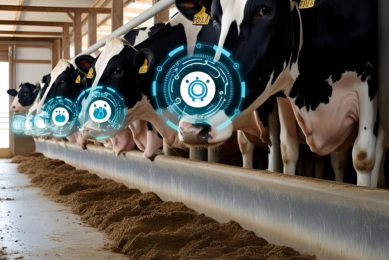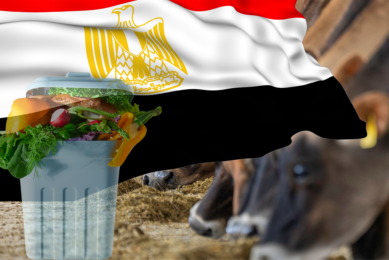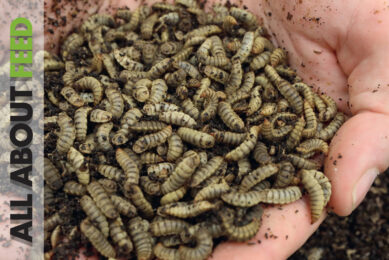Feed Industry faces hurdles in AI adoption
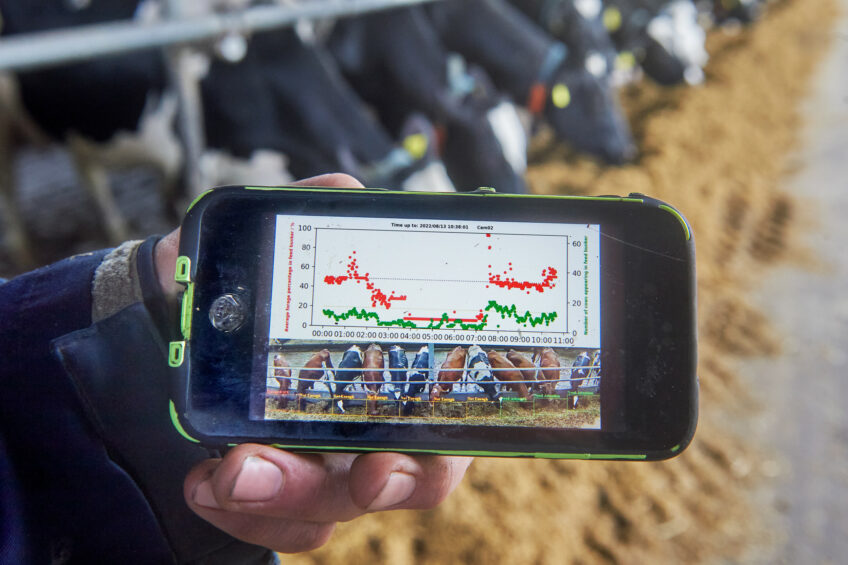
The booming popularity of next-generation AI solutions is taking the European feed industry by storm. However, while companies do experiment with new technologies, very few adopt them. Practice shows that feed companies are still unsure about how AI precisely fits into their operations.
“In my experience, within the last 12 months, every leading organisation in animal nutrition has put together an urgent and strategic group to examine Chat-GPT, the use of AI and the rapid adoption of IoT technologies within the feed mill and supply chain,” commented Aidan Connolly, President of the International Food and Agribusiness Management Association.
However, success stories are relatively scarce so far. “Concrete examples of success are fewer than I would have expected, given that organisations don’t want to publicise their efforts and there are many laggards in the feed industry in terms of adoption,” Connolly admitted.
Potential for European feed manufacturers
Connolly reaffirmed that AI represents a huge opportunity for European feed manufacturers, especially with the added complexities of CSDDD, CSRDD and SBTs compliance within the business. This means that, conversely, ignoring AI is risky, and failure to implement it an existential threat. “Those who use it will be more efficient, provide better customer service and comply better with the conveyor belt of new European legislation,” Connolly said.
Since OpenAI released an early demo of ChatGPT on November 30, 2022, to the public, the topic of Artificial intelligence is omnipresent, agreed Wolfgang Steiner, Head of Digital Value Nutrition at Bühler. “The interest has increased massively,” Steiner said, adding that AI has undoubtedly become one of the hot topics in the feed industry, with everyone along the entire feed value chain asking how AI will affect their business and their job.” There are many questions, but not a lot of definitive answers,” Steiner added.
The picture is similar across the ocean. Rebecca Kern-Lunbery, Feed Testing Product Manager with Ward Laboratories, USA, believes the industry as a whole is slow in adopting AI technologies. “The first steps are currently being taken to introduce and utilise big data science methods such as machine learning. We are just now starting to tap into existing large data sets to improve decision-making. The next steps would be purposefully collecting large amounts of information and letting AI have access to improve our processes,” Kern-Lunbery commented.
Cost matters
There are several reasons behind the relatively slow introduction of AI technologies into the feed industry. Some market players believe the feed industry is too conservative to swiftly embrace new technologies. But there can be more to it than that.
“The feed industry is still thinking conventionally,” says Soumya Kanti Kar, MVSc, PhD, Senior Scientist at Dept. of Animal Nutrition, Wageningen Livestock Research. “I would say that it is risk-aversive, particularly big players.” European companies have not all jumped onto the AI train, since there are still questions that need to be resolved, Kar stated.
While agriculture as a whole has been relatively conservative and slow to adopt new technology, feed manufacturers are generally more advanced, and new build feed-mills incorporate the newest thinking
Aidan Connolly, President of the International Food and Agribusiness Management Association
The feed industry may see more AI technologies in operation moving forward, as it can be challenging to fit new solutions into existing operations. “The feed industry is characterised by low margins, and as such, technologies are often retrofitted, so not necessarily resulting in a fundamental re-design of production processes, which is where AI is most effective,” Connolly explained. “I don’t think the feed industry is too conservative. It is just finding a balance between the investment costs and time and the possible gain, which is not always fully clear yet, I think,” Astrid Tempelaere, Doctoral Researcher MeBioS KUL, commented. Tempelaere also noted that the margins in the food industry are relatively low, while implementing AI and integrating new technologies to acquire data, such as sensors and data labelling, all cost money.
“Cost is certainly another barrier to entry,” Kern-Lunbery agreed. “Depending on the segment and the AI technologies we are talking about, the purchase of sensors just to collect data relating to animal health, for example, would be expensive and preclude small operations from utilising that technology. However, as with most technological advances, I would expect that cost to decrease or for the value to be better understood”.
Kar also indicated that issues related to privacy policy are one of the hurdles for mass AI use across the feed industry. He explained that AI services work with large arrays of data, the protection of which against unauthorised use comes to the fore.
Technical bumps on the road
Tempelaere said it is no surprise that the application of AI along the food industry’s supply chain is still difficult. The frenzy that followed the initial launch of Chat-GPT may also have produced too high an expectation that AI would revolutionise the feed industry in a matter of months. “From my point of view, the general public considers AI to be the holy grail for all problems, but AI is much more complicated,” Tempelaere noted. Tempelaere explained that AI algorithms are especially sensitive to changes in the data. For example, if you need to check food, but another colour of transport belt is used where the food is placed, this can already strongly reduce the performance of the AI algorithm.
Another difficulty is the need for labelled data. In the food industry, but also industries such as pharma, automotive, and so on, AI is used to detect products that deviate from the quality standards. However, Tempelaere indicated that such objects are quite limited, which makes it difficult to provide enough examples to the AI algorithm while it is learning. Another concern is that it lacks explainability about how a certain prediction by the AI algorithm has been made.
“So, who is going to be responsible for mispredictions, for instance?” Tempelaere asks, adding that these factors primarily contribute to the industry’s still-limited success rate. In essence, AI can be regarded as a collection of advanced mathematical equations and models that need to be optimised for specific tasks, Tempelaere concluded.
Analysts also pointed out that when speaking about the AI transition in the feed industry, the human factor must be taken into account. “Overall, I believe that professionals within the industry are older and the technological challenges are intimidating for many of those folks,” Kern-Lunbery said. “I heard on a podcast one gentlemen state that he was not afraid AI would replace him as an animal nutritionist because it doesn’t have access to the National Academies of Science, Engineering and Medicine’s most recent edition of Nutrient Requirements for Dairy Cattle due to the pay wall,” Kern-Lunbery said.
Kern-Lunbery added that while technically this is true, it is a disadvantage to the efficiency of the work in balancing the best possible rations. “Rather than having a mindset that we as professionals are competing with AI, we need to see AI as a tool. And like any tool, that requires us to get some training to properly use it,” Kern-Lunbery stated.
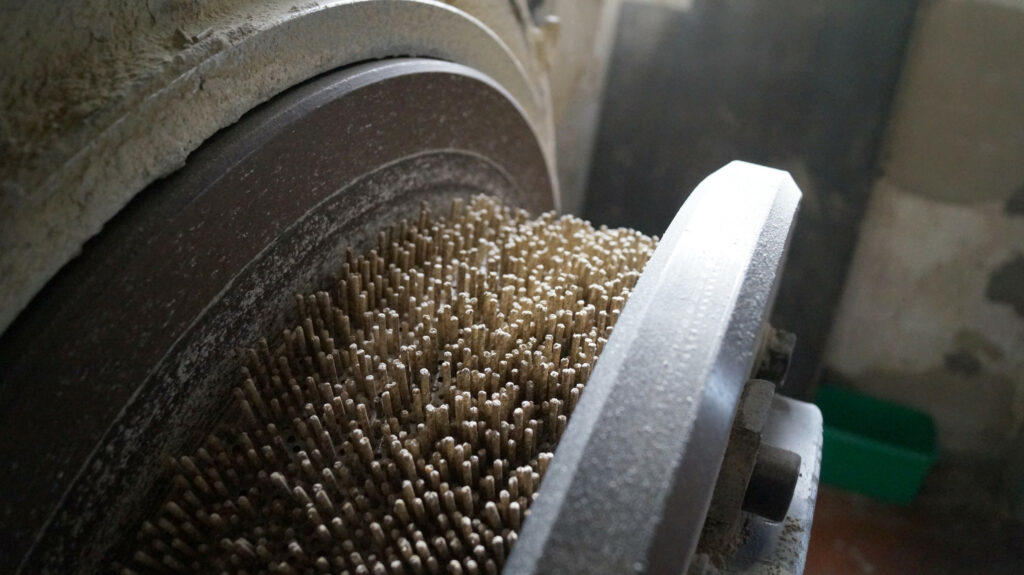
Gaining steam
Despite the headwinds, analysts are confident that AI will eventually see its presence in the feed industry steadily grow, as the benefits offered by new technologies are undeniable.
AI technologies have the potential to deliver value along the entire feed value chain, with applications ranging from precision farming, feed safety, supply chain and formulation optimisation, Buhler’s Steiner stated. “Within a feed mill, it’s the pelleting process where we see the biggest potential,” Steiner noted, citing PelletingPro, its smart pelleting process control, which includes an AI-based algorithm to continuously optimise pellet quality independently of any seasonal or weather effects. “This ensures a constant moisture level of the final pellet with an accuracy of +/- 0.5 percentage points, which leads to a yield increase of up to 1%. In addition, throughput can be increased by up to 10%, and specific energy consumption can be reduced across the whole pelleting line. And this without having to invest in new machinery, simply by retrofitting and with a little help from AI,” Stainer said.
All in all, Stainer added, AI can play a pivotal role in assessing production planning for efficiency, analysing mass flow, and identifying solutions to alleviate bottlenecks. The performance of existing assets can be optimised by applying the insights derived from the process data. Furthermore, unplanned downtime can be better monitored and reduced through intelligent root cause analysis.
AI can be used at each particular link of the value chain, Kar said, reminding us that these novel technologies can transform the product specification process and product safety control in the same way as it once revolutionised the taxi industry. “In the past, you needed to call a taxi service. Now, all you need to do is pick up your phone,” Kar said, adding that AI will simplify many feed industry processes in a similar manner. The AI use in the logistics industry will inevitable reduce the logistics costs for the feed industry, Kar also indicated. Right now, there are a lot of implementations with sensors on the larger operations and industries that have a more integrated industry model, Kern-Lunbery said, adding that in her opinion, that the early adopters will be poultry, pigs, then dairy.
“I think feed mills and consultants can be early adopters and evangelists with the right training and technologies at their fingertips. We need to see more partnerships with data scientists and livestock professionals to get the right tools, utilising the right information into the hands of the right people,” Kern-Lunbery said.




